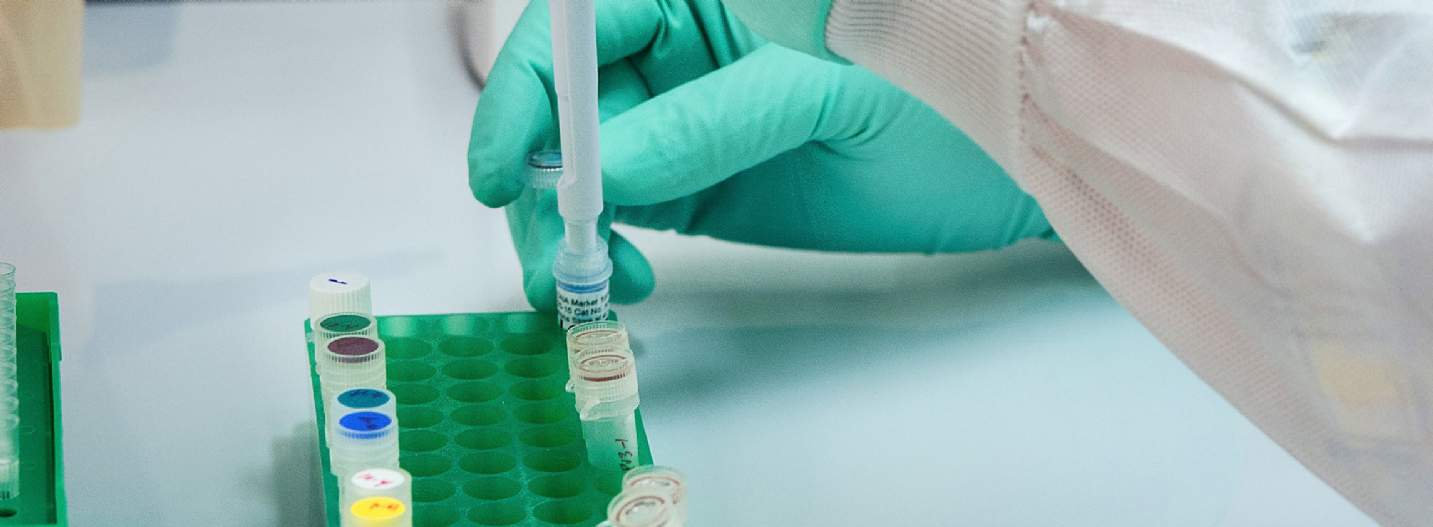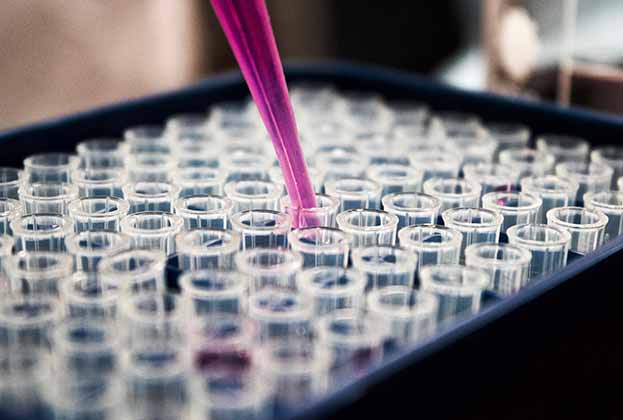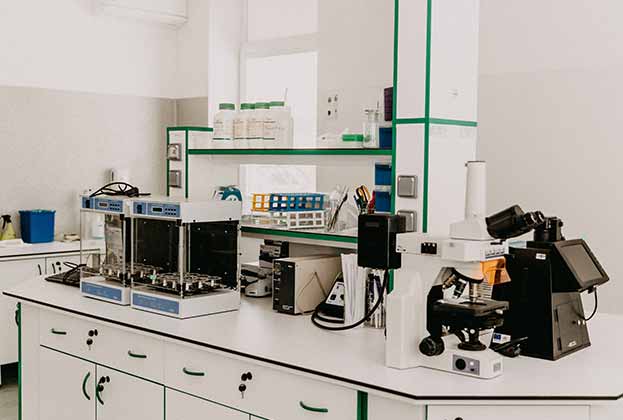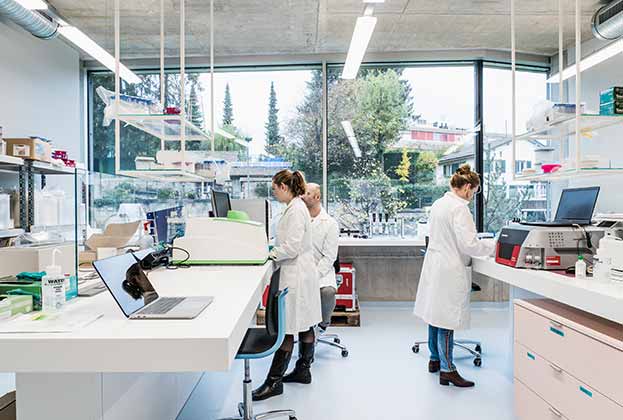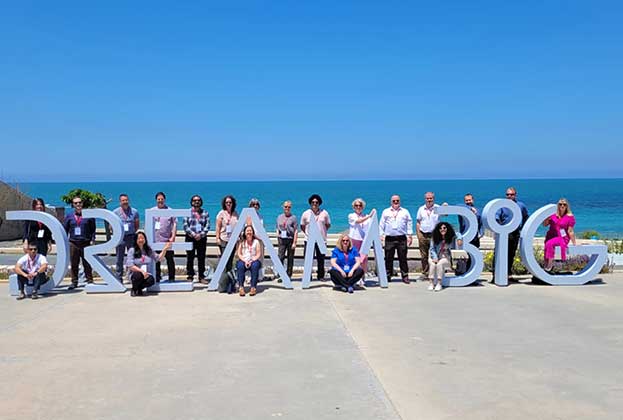Despite lower levels of capital raising, the real estate fundamentals remain strong
Global & UK trends
The past 12 months has not slowed in terms of interest levels from developers, investors, and landlords regarding the science sector. Colleagues across the Savills global network have been discussing the growth potential and becoming involved with new projects. It is not a sector that goes away as the global impact of Covid-19 recedes. The structural shifts required in ensuring human health issues and needs are front and centre will ensure a continuation in the need to deliver scientific discovery, which will require real estate.
Funding of discovery comes in various forms – corporate, government and investors. Tracking this provides an indicator of future growth. Looking at the scale of capital raised in the life science sector, including corporate M&A or venture capital (VC), fell in 2022 (see chart below).
However, this was following an abnormally high 2021. At the city level, as shown in the chart below, the US continues to dominate, including New York (see London life science sector looks to New York for lessons on growth) and Boston/Cambridge (see View from the US). Where does the VC funding market go from here? Venture capitalists are sat on a record level of "dry powder" following tens of billions being raised in the past couple of years. When they begin to invest, it will be chasing the higher quality opportunities, and those opportunities within the life science sector will be considered equally. This will increase real estate demand.
It is also worth reviewing what the large pharmaceutical companies are doing. Away from the much talked about level of VC activity, it is the pharma companies that are making the big corporate acquisitions. They are also growing their spend on R&D as part of their strategy alongside M&A activity. For the top ten pharma companies, based on latest data, annual R&D spend rose 13% on average and totalled around $94 billion. At the same time, sales grew by 23% on average per annum. The large pharma companies will remain acquisitive, in terms of real estate, but will also be rationalising in some locations.
The ESG plans of the life science sector have grown considerably in the past few years, and the article in this report (ESG: The balancing act) outlines the challenges and strategies. Some initiatives have started at the grassroots level, with laboratory users questioning their use of equipment and consumables (see My Green Lab mygreenlab.org). Certifications have also grown, as seen in the wider global commercial real estate market, but the Laboratory Efficiency Assessment Framework (LEAF) is highlighted in the article.
During the first week of March, the UK Government published the Science & Technology Framework, which sets out the ten-point plan for science and technology growth in the UK. This is a great step forward and funding has been committed, but must grow further over time to ensure the UK remains world-class. Also, the Horizon Europe Guarantee scheme has been extended to end of June 2023, which protects funding for research. Hopefully, negotiations with the EU over research collaborations will take the next positive step forward in the coming months. This supports research output in various institutions and assists with the formation and growth of science companies, resulting in future take-up of real estate. Supporting the smaller business remains a critical discussion at the time of writing, as the UK is within the final week of an eight-week consultation period for R&D tax reform for SME companies. A cut to tax relief during 2022 was not a positive step forward.
The rental premium for fitted lab space when compared to conventional office space is, on average, 70% higher across Cambridge, Oxford, and London
Steven Lang, Director, Commercial Research
The continued imbalance between supply and demand of laboratory space across the 'golden triangle' market area has resulted in the region having strong rental growth prospects. The vacancy rates for available fitted laboratory space are below 1% in both Cambridge and London and 7% in Oxford, demonstrating the supply constraints present in the market. The shortage of immediately available fitted lab space has resulted in landlords across the region considering retrofitting existing office stock and delivering speculatively fitted lab space. Requirements seeking laboratory accommodation are often driven by organic growth from occupiers who are seeking space within a three- to six-month timeframe, which will benefit landlords who are able to speculatively fit accommodation with laboratory space in 2023. The rental premium for fitted lab space when compared to conventional office space is, on average, 70% higher across Cambridge, Oxford, and London.
There is a chronic shortage of fitted lab space in the city centre locations of Oxford and Cambridge which has resulted in strong rental growth prospects; rents are expected to reach near £100 per sq ft for fitted lab space in Cambridge by 2026, reflecting a 25% increase on the current market rent. Significant rental growth is also expected in Oxford. The London lab market is nascent, with rental premiums beginning to emerge in Q4 2022. Fitted lab transactions have already surpassed the £100 per sq ft level in King's Cross, where £110 per sq ft has been achieved and likely to go higher this year. Rental levels in the mid-£90s per sq ft are being achieved in White City and Hammersmith.
The real estate implications and opportunities are considerable in the science sector and, as we picked up in the previous version of this report, the manufacturing side is as important as the labs. Science is not just about labs. In the UK, albeit announced a year ago, the Life Science Innovative Manufacturing Fund will provide up to £260 million. Most of the funding (£200 million) will be used to invest in digital capabilities in clinical trial services and to help researchers better access NHS data, as it is so important to commercialise discovery. A further £60 million will be available to support commercial-scale manufacturing investments by companies developing a range of technologies, including medical devices and diagnostics, and cell and gene therapies. This will assist in strengthening the UK science ecosystem.
View from the Head of UK Science at Savills
Take-up for science-related real estate across the golden triangle of London, Oxford and Cambridge totalled 1.39 million sq ft in 2022, the highest figure in the past five years.
Both London and Oxford saw an increase in take-up at 451,148 and 497,911 sq ft, respectively. In contrast, our figures show that Cambridge saw a 35% decline in 2022 to 438,911 sq ft, which can be attributed to a critical lack of stock, with vacancy rates for labs at just 0.57% across the city.
Key deals included GlaxoSmithKline (GSK) taking 145,000 sq ft at the Earnshaw Building on New Oxford Street in London, which signifies the increasing interest from big pharma looking to take advantage of the capital’s growing science ecosystem. VC-funded biotech firm OMass Therapeutics took 16,000 sq ft of fully fitted lab space in Building 4000 at ARC Oxford, and Blue Giant took 7,500 sq ft at Rolling Stock Yard in King’s Cross, one of the first 'lab premium deals' in London.
Given the level of unsatisfied demand, the delivery of new stock across the golden triangle will be critical. The emergence of new lab space will help to set more rental evidence, which should help to underwrite further development in 2023
Tom Mellows, Head of UK Science, Savills
VC funding also remained positive in 2022, with London alone 67% above the five-year annual average. In total, the golden triangle saw £2.4 billion of VC raised, which we anticipate will translate into further real estate requirements as these businesses continue their expansion. What is clear is that 2023 is likely to see the impact of a tougher funding market, with early-stage occupiers finding it harder to raise VC. Although London, in particular, is more insulated than other global markets, occupiers will still look to conserve cash in the face of wider economic headwinds. With this in mind, it will be the landlords who provide both flexibility and the right type of space who stand to benefit the most.
Looking ahead, Savills has recorded over 4 million sq ft of requirements across London, Oxford and Cambridge, suggesting there is still a significant level of demand for laboratory space.
Given the level of unsatisfied demand, the delivery of new stock across the golden triangle will be critical. The emergence of new lab space will help to set more rental evidence, which should help to underwrite further development in 2023. There is no doubt the sector has taken a huge leap forward but still faces numerous challenges, including streamlining the planning system to unlock this delivery, as well as getting the right long-term strategic policies in place to better support science firms on the road to commercialisation.
Read the articles within Spotlight: Life Sciences – Trends & Outlook below.
